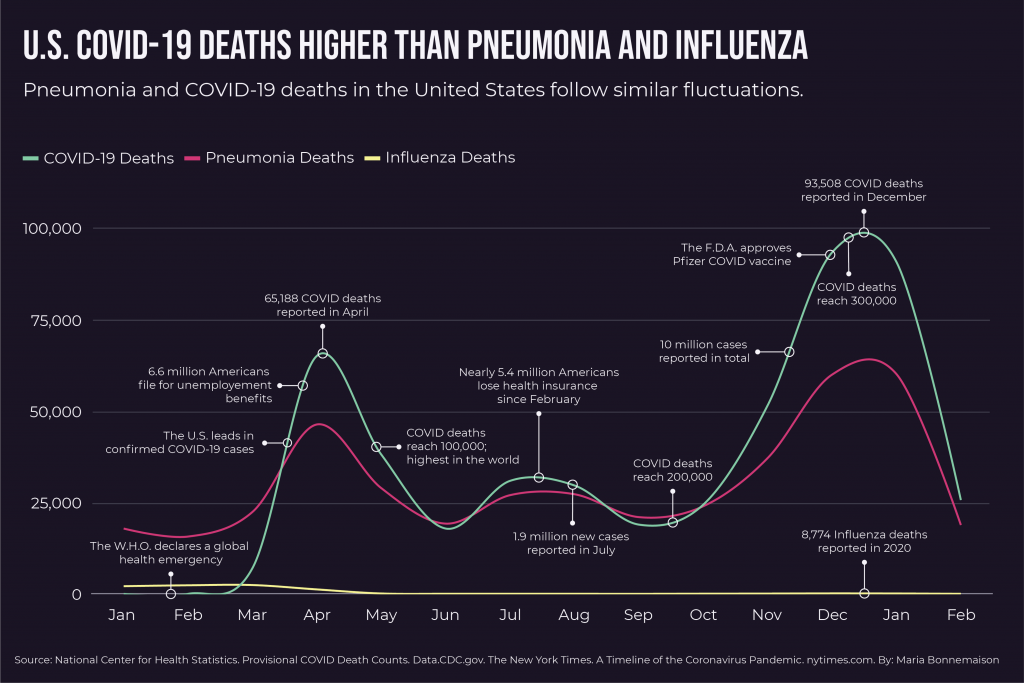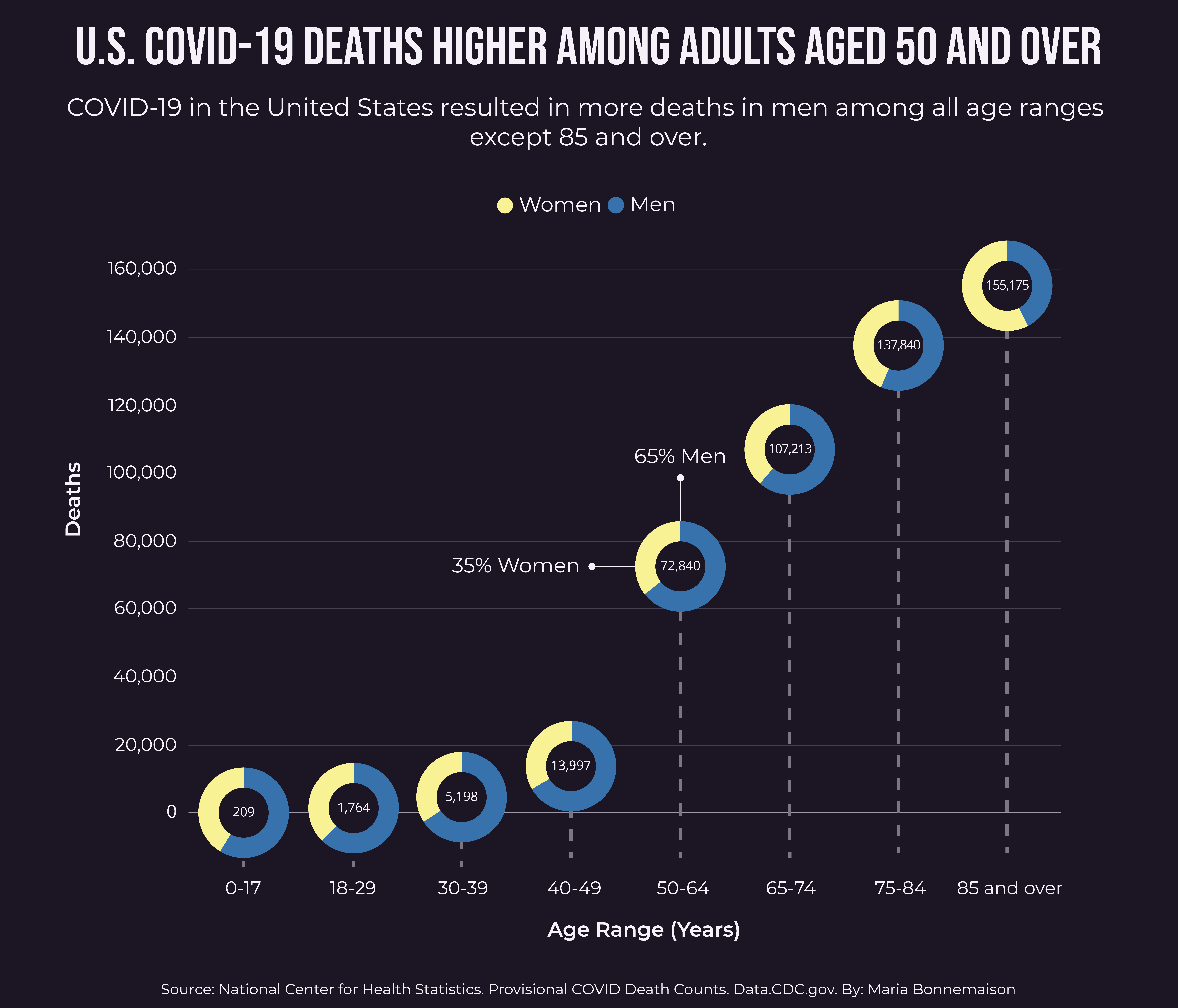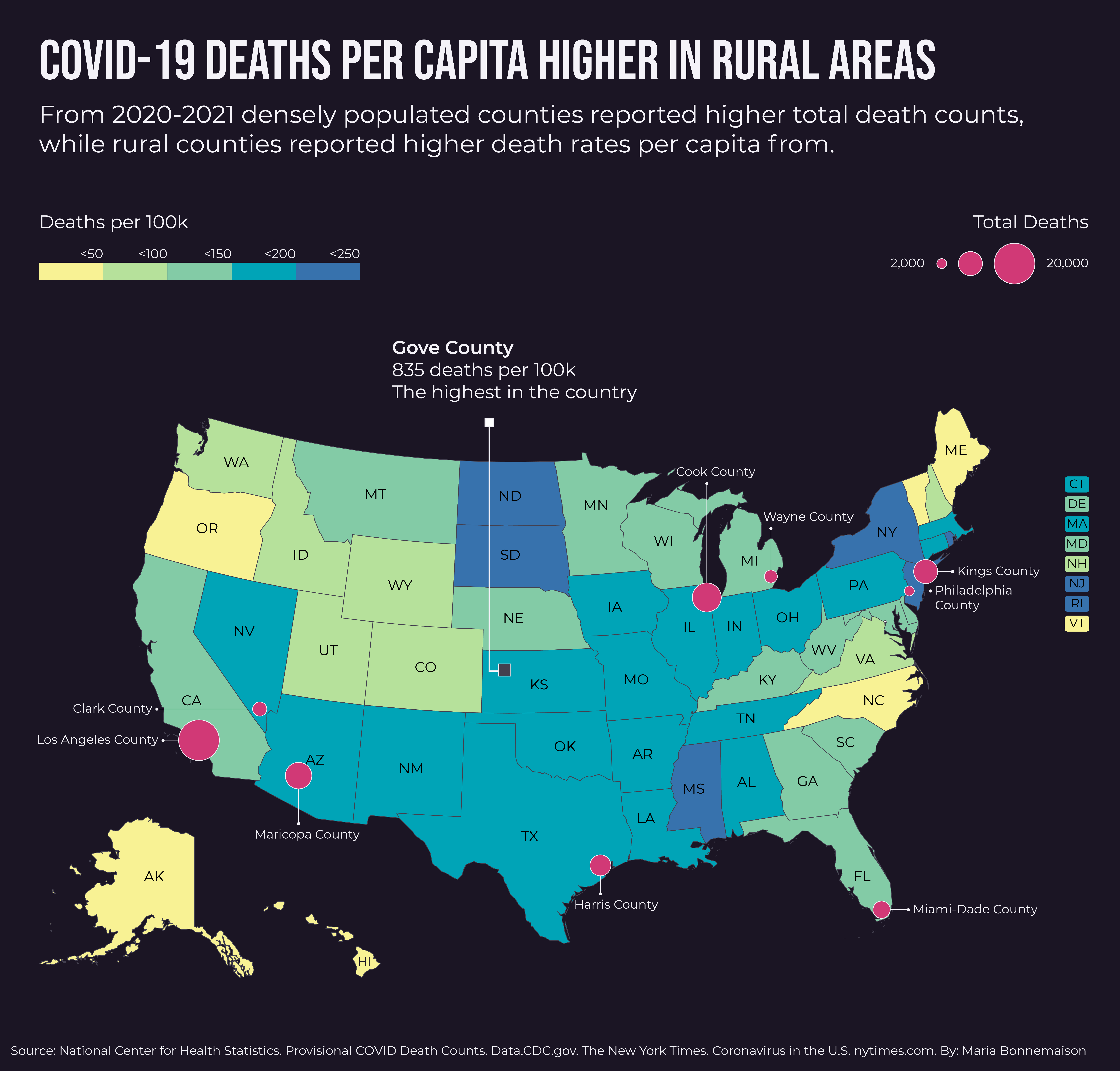The United States reported its first case of the novel Coronavirus in January 2020. By March, the nation reported the highest number of confirmed COVID-19 cases in the world.

COVID-19, which was first identified in Wuhan, China, has infected over 138 million people and killed about 3 million globally. The U.S. accounts for 31.5 million of those cases and over 564,000 deaths.
The pandemic took a devastating toll on the healthcare system as hospitals became overwhelmed with COVID-19 patients. The virus has affected millions of working Americans due to state-imposed lockdowns nationwide. By April 2020 over 6.6 million people had filed for unemployment benefits. By mid-July, nearly 5.4 million Americans lost their health insurance.
Throughout the course of the pandemic, misinformation has flooded social media outlets. One faulty piece of information circulating online — aimed at downplaying the severity of the virus — claims that influenza is much deadlier than COVID-19. A Facebook post written by the account The British Movement for Freedom and Justice claims that the flu is killing 14 times more people than COVID-19. However, death reports from the CDC show that in 2020 influenza killed about 8,700 people in the US. By the end of 2020, COVID-19 had killed over 370,000 people — making it over 42 times deadlier than the flu.
Because COVID-19 is considered a respiratory disease, it’s important to note that pneumonia deaths, although lower, follow the same fluctuations as COVID-19. Most cases of pneumonia since January 2020 have been linked to COVID-19 infections, even if the cause of death is only reported as pneumonia. In this figure, the CDC reports “deaths involving pneumonia, with or without COVID-19.”
According to Johns Hopkins Medicine, “while most people recover from pneumonia without any lasting lung damage, the pneumonia associated with COVID-19 may be severe. Even after the disease has passed, lung injury may result in breathing difficulties that might take months to improve.”

According to the data reported by the CDC, COVID-19 is consistently deadlier among adults aged 50 and over. The largest number of deaths occurred among ages 85 and over. The data also shows that COVID-19 is more than half as deadly in men of all ages — except 85 and over, where women claim more than half of deaths. However, this may be due to the fact life expectancy is higher in women than in men.
Similarly, COVID-19 has not affected all states in the same way. Densely populated counties near coastal regions reported significantly higher total death counts than the rest of the country. Los Angeles County has reported a total of over 23,000 deaths, being the densest county in the country with a population of over 10 million people.

Despite the high number of deaths reported in California, the death rate per capita is lower than the majority of the states, particularly in the midwest and southwest regions of the US. Alaska, Hawaii, Maine, North Carolina, Oregon and Vermont reported the lowest death rates with less than 50 deaths per 100,000. Mississippi, New York, New Jersey, North Dakota, Rhode Island and South Dakota reported the highest death rates with over 200 deaths per 100,000.
Gove County, Arkansas reported only about 20 COVID-19 deaths. But with a population of nearly 2,640 the death rate per capita would be over 835 deaths per 100,000. Gove County holds the highest death rate of any other county in the country.
The CDC states that about 78 million — about 15% of the U.S population — have been fully vaccinated against COVID-19. As more people get vaccinated, the death rates will continue to trend down.
All data came from the Centers for Disease Control and Prevention (as curated by the National Center of Health Statistics) and The New York Times (A Timeline of the Coronavirus Pandemic and Coronavirus in the U.S.:Latest Map and Case Count). Data was limited to Deaths reported to the CDC by sex, age, county and state from January 2020 to March 2021 in the United States. Download datasets at Provisional COVID Deaths and COVID Deaths by County.
































